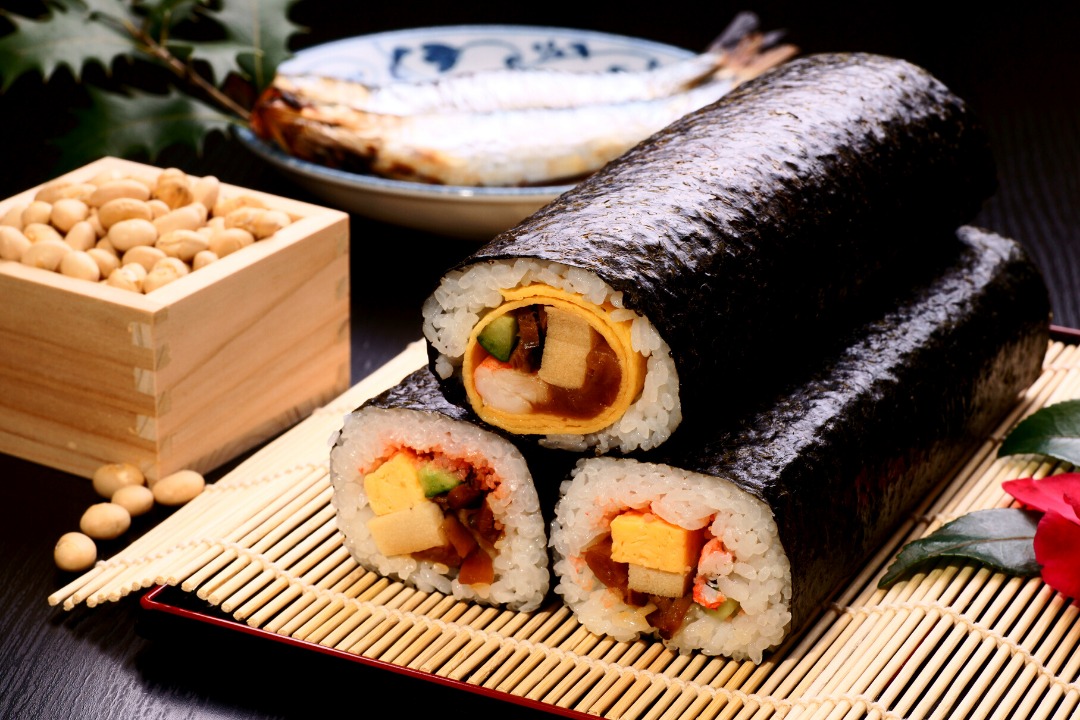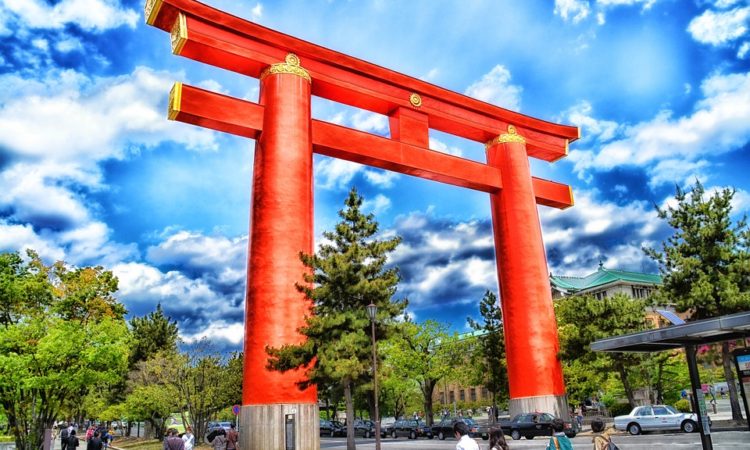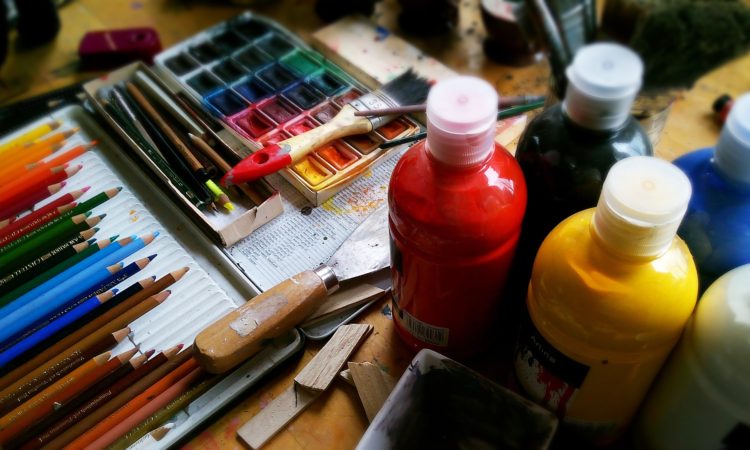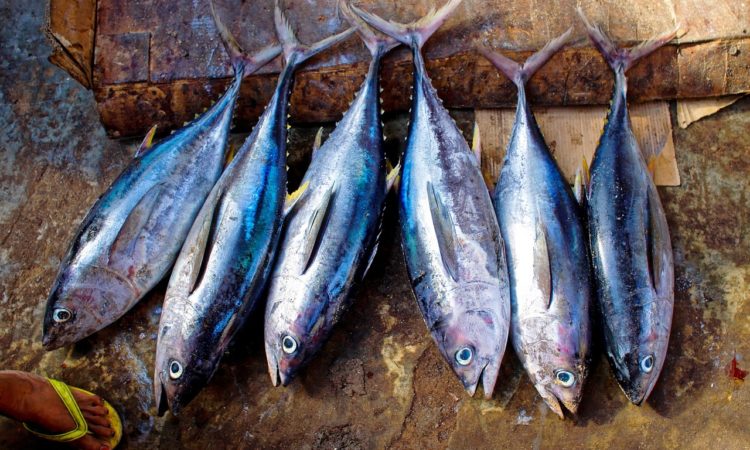Ehomaki (恵方巻), which is made up of the kanji for 恵 (favoured, blessed), 方 (direction), and 巻 (roll), is a thick sushi roll containing a variety of toppings packed in and is eaten on the evening of setsubun, which marks the last day of winter.
Both setsubun (節分), the last day of winter and risshun, (立春), the first day of spring, are associated with the old lunar calendar. And although Japan has since switched to the Gregorian calendar, many people in Japan continue to celebrate many of the traditions connected to the Lunar New Year.

Photo credit: Canva
Setsubun is usually (but not always) held on the 3rd of February of the year and brings with it a host of special celebrations such as mamemaki (bean throwing) and decorating with hiiragi iwashi (a holly branch attached to a sardine head)!
What is Ehomaki, and Where Did it Start?
It is thought that people began eating Ehomaki in Osaka during the Edo period. Until recently, it was mainly practised by those living in the Kansai region; however, a nationwide marketing campaign led by larger supermarkets and convenience stores brought the custom to the rest of Japan.
Although appearance-wise, Ehomaki is comparable to sushi, unlike sushi, Ehomaki is left uncut and eaten as is. Another notable difference between the two is that Ehomaki usually contains seven toppings, representing the 7 Gods of Fortune who bring wealth and happiness.
Seven is also seen as a lucky number in Japan, so if you go for an Ehomaki with seven toppings, you may be able to attract even more luck!

Photo credit: Canva
There are no set rules on which ingredients should be used for Ehomaki, but it’s not uncommon to see roe, cucumber, salmon, crabstick and shiitake mushrooms, amongst many other things! Yum!
The Three Rules of Ehomaki
1. Ehomaki should be eaten facing the lucky direction of the year
Every year, the lucky direction (恵方 eho) for that year is decided based on the Chinese astrological calendar. This year’s lucky direction for 2023 is South-Southeast!
So, if you decide to buy Ehomaki this year, remember to eat while facing South-east!
2. Ehomaki should be eaten in silence
It is believed that if you talk while eating Ehomaki, all the good fortune that eating Ehomaki is supposed to bring you will escape.
3. Ehomaki must not be cut into smaller pieces
You should never cut the edges off an Ehomaki; otherwise, it is said that you’re cutting off your fortune!
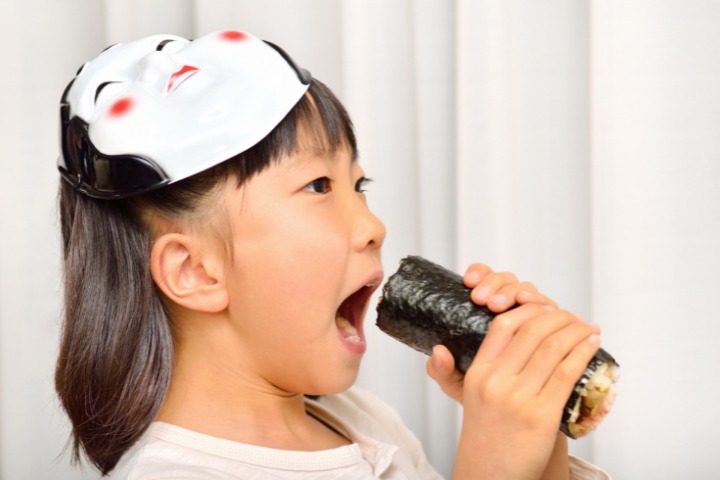
Photo credit: Canva
A Twist on Tradition!
This year, because of the COVID-19 pandemic, more and more restaurants have begun jumping on the Ehomaki bandwagon. As people are, understandably, more reluctant to eat out during a pandemic, many restaurants and izakaya have begun offering Ehomaki reservations to make up for lost income.
However, this has also meant a boom in exciting and unusual Ehomaki! Higher higher-end restaurants and those looking to stand out have begun creating Ehomaki with a twist. Nowadays, you can find a massive variety of Ehomaki, from rolls that are sprinkled with gold foil to rolls wrapped in Wagyu beef instead of nori (seaweed)!
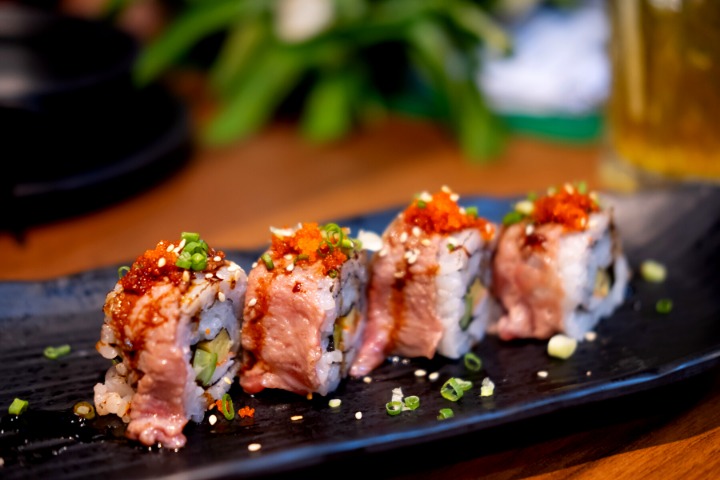
Photo credit: Canva
Controversy
Although eating Ehomaki is a fun and traditional way to welcome in spring, it hasn’t been without controversy.
Like most other high-income countries, Japan has had a long-running problem with food waste. Every year, when department stores and supermarkets begin preparing for the Setsubun, they prepare vast amounts of Ehomaki that go to waste if they aren’t sold.
In 2018, there was some controversy around large amounts of Ehomaki being wasted by supermarkets who had been overproducing the rolls to meet their customers’ needs. To try and avoid a repeat this year, many people are calling out for convenience and department stores to watch out for their waste, while many restaurants are operating on a reservation-only system to avoid the same.
So, this year, if you’ve got some time, why not try making your own Ehomaki at home? Here’s a quick and easy recipe from the Japan Centre!
Attract Good Fortune For The Year Ahead Through Ehomaki!
With the continuing pandemic, many people are choosing to stay and home rather than eat out, meaning that there are many options available for those who wish to enjoy the Setsubun festivities at home.
This year, why not try taking part in traditions like mamemaki and hiiragi iwashi to get you in the mood to welcome in spring!
Will you be eating Ehomaki this year?
For More Related Articles:
- Setsubun – The Bean-Throwing Festival in Japan is Today!
- 5 Epic Japanese Festivals to Put in Your Diary for Next Summer!
- 4 Seasonal Japanese Vegetables to Eat in Spring
- Does Japan Celebrate Chinese New Year? Lunar New Year in Japan
- Hina Matsuri: A Celebration of Girls
featured photo credit: Canva

